Yeah! No Kids! Time To Go And Learn!
An evening without kids at the aquarium! Great idea!

Notice... No yelling and screaming kids and parents on cell-phones

Keeping an eye on things

They had a band....

Time for a nappy!

Did You Know? - Penguins have existed on Earth for more than 50 million years, and over that time they have adapted to living in many regions of the Southern Hemisphere. They live along the coasts of South America, Africa, Australia, New Zealand, and Antarctica as well as on surrounding islands, including the Galápagos off the coast of Ecuador, where the northernmost penguins live.
Magellanic Penguins were named after the Portuguese explorer Ferdinand Magellan, who was the first to sail from the Atlantic Ocean to the Pacific Ocean in the mid-1500s through what is now called the Strait of Magellan. A temperate species, Magellanic Penguins are usually about two to two-and-a-half feet tall and weigh between six and fifteen pounds when fully grown. Their closest relatives are the other temperate penguin species: the Galápagos, Humboldt, and African Penguins.

We are underneath the tank looking up

Sue walked right up and talked to them
Did You Know? - Penguins are birds, and they have feathers and lay eggs. But unlike most other birds, they cannot fly. While flying birds are lightweight, penguins have thick, heavy bones, allowing them to dive and swim underwater. Their wings are more like flippers that are adapted to help penguins “fly” through the water.
The torpedo-like shape of their bodies and their feathers help them swim rapidly. They have three hundred times more feathers than flying birds of the same size, with a layer of down that traps air for insulation and an outer layer of feathers that can lock together to form a water-tight covering. Their feathers also help control the penguin’s body temperature. They spend up to three hours a day preening to ensure that the feathers are clean.

Hello there big guy

Nice touch screen learning
Did You Know? - So why are penguins black and white? This adaptation is a kind of camouflaging called counter-shading, which makes it harder for both their predators and their prey to see them. When penguins are in the water, their white chests camouflage them from being seen from below against the lighter sky. From above, their black backs help them blend in with the darker blue ocean waters. In the ocean, penguins’ predators include seals, sea lions, and killer whales.

Paid political advertisements... always


Preening underway
Did You Know? - Magellanic Penguins build their nests during the breeding season along the rocky, sandy beaches of the southern coasts of Argentina and Chile and on the Falkland Islands. The largest colony of Magellanic Penguins, with more than 200,000 breeding pairs, is located at Punta Tombo in Argentina. If the nest has not been destroyed over the course of the year, Magellanic Penguins may use the same nest for several years. Magellanic Penguins nest in the open or under bushes and some burrow into the soil by lying on their bellies and digging with their feet. Breeding grounds may contain thousands of nests.
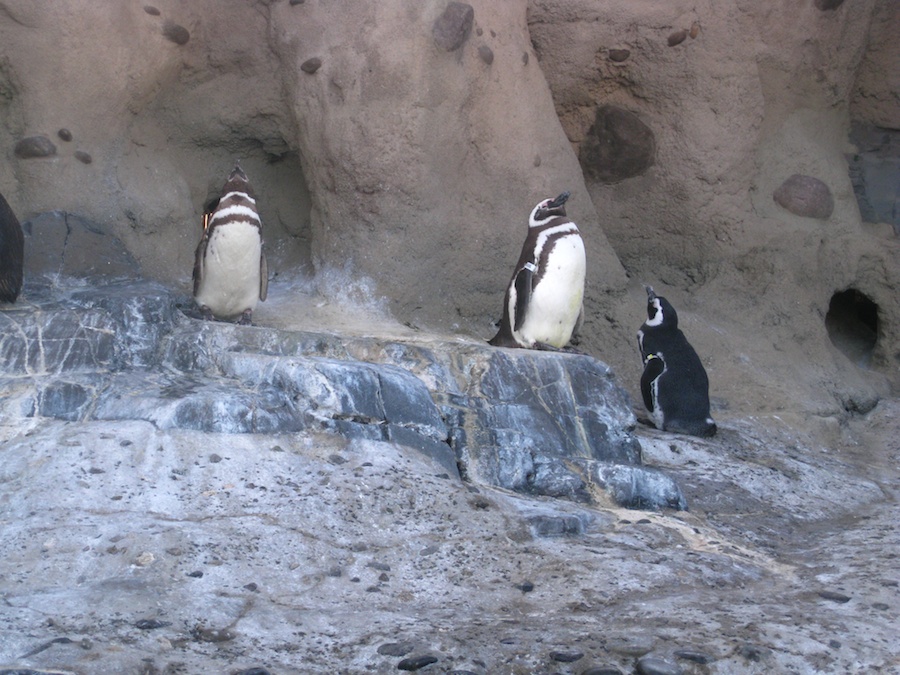
Stoic little guys...
Did You Know? - Penguins vocalize to recognize each other. Each penguin’s voice is as distinct as a human fingerprint. Many Magellanic Penguins are faithful to their partners. They nest once each year, usually laying their eggs in October. The female lays two eggs four days apart. The parents take turns incubating the eggs, lying on the nest on their bellies, and caring for the chicks once they hatch. The amount of time it takes for the chicks to grow and fledge depends on the availability of food and the parents’ success at foraging.

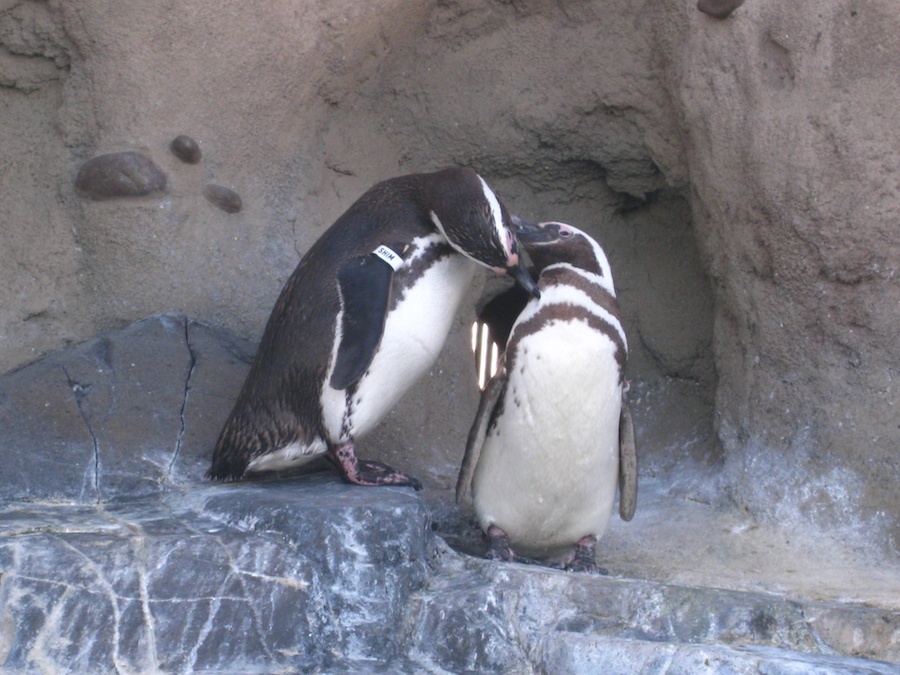
Kissy kissy

The tags on their wings are their names
Did You Know? - Adult penguins molt their feathers after the breeding season ends and chicks have fledged. All birds lose feathers and grow new ones, but penguins have adapted to molt and regrow all their feathers at once. Penguins go on a feeding binge to bulk up before molting. Because their feathers are not water-tight during the molt, they stay onshore and fast during the two to five weeks it takes for new feathers to grow in.
During this period penguins are particularly vulnerable to predators on land. Depending on the region, penguins are hunted by foxes, leopards, and other small mammals as well as other seabirds, like gulls. Once the molt is completed, penguins are able to return to the sea and begin their travels in search of food.
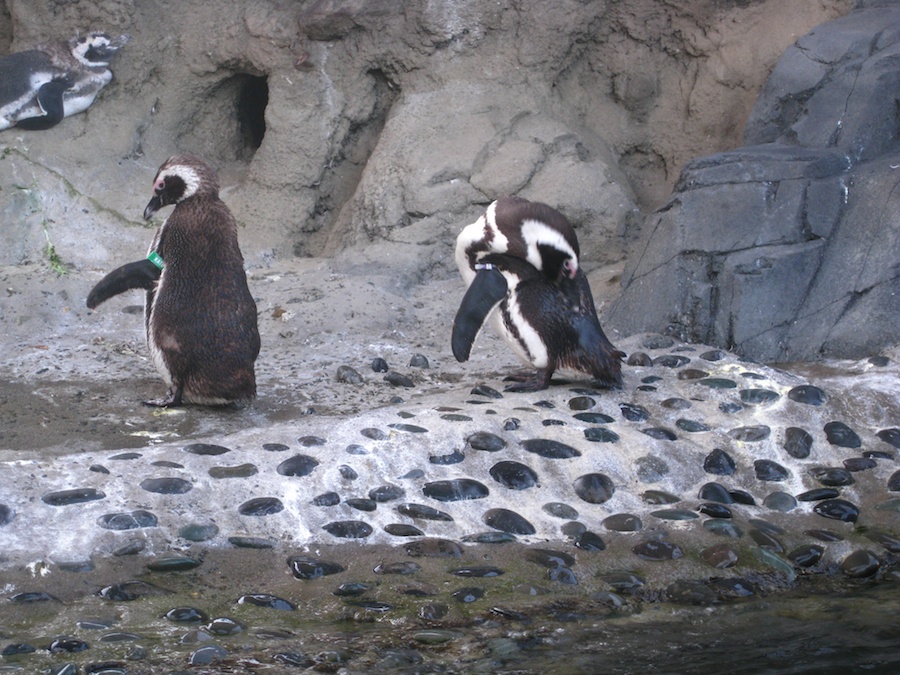

Newso was taking a nappy
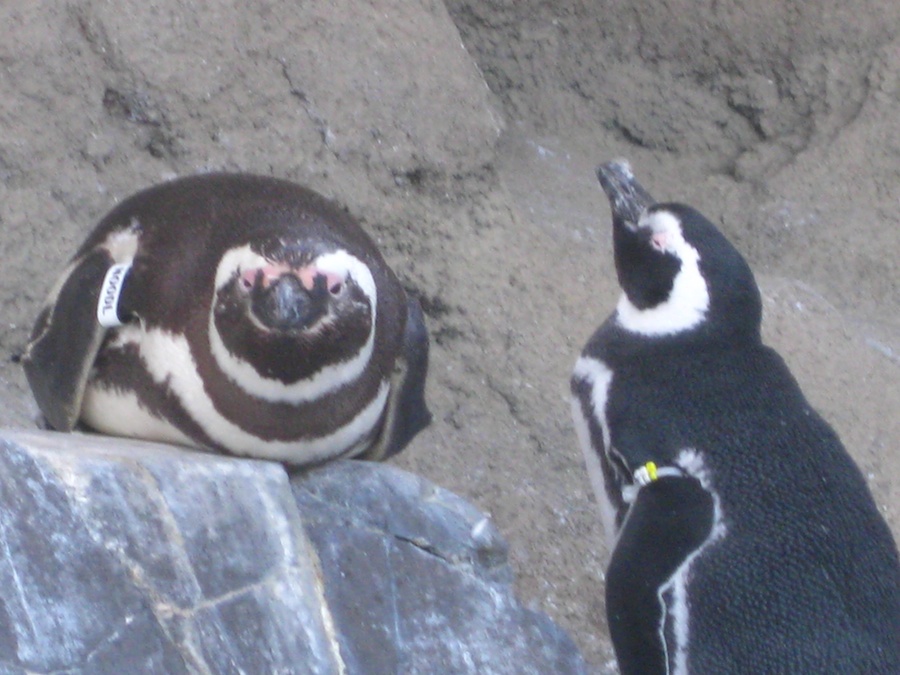
Mr. Chubbs
Did You Know? - Magellanic Penguins are naturally curious and have excellent eyesight. In aquariums and zoos they are known to notice new objects in their enclosures or changes made to their routines. At the Aquarium for example, the penguins are used to seeing humans wearing the Aquarium uniform and are more hesitant around a visitor in different clothing. They are amenable to some training and will follow a trainer’s instructions to swim across a pool and back, for instance.

All over South America
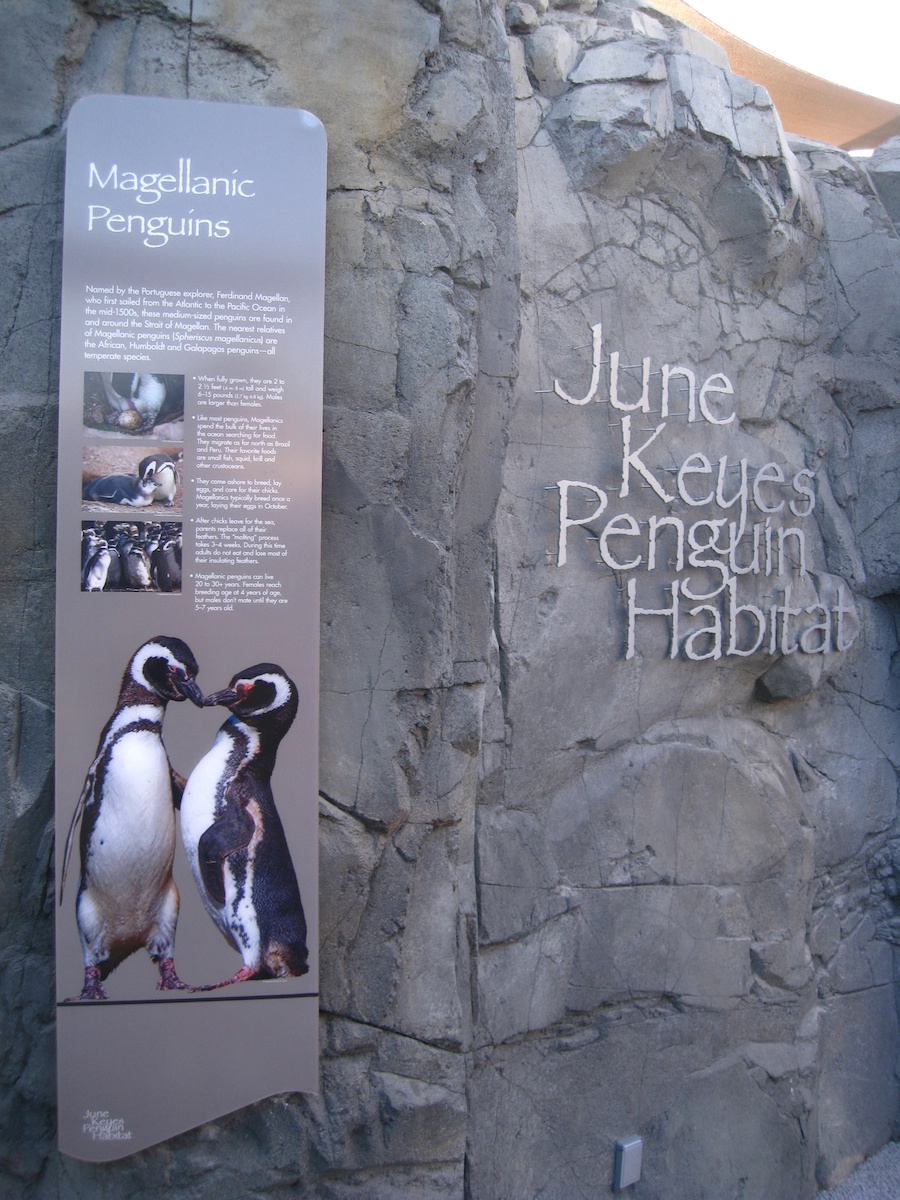
On To The Rest Of The Aquarium


My own fur coat... OK, they are feathers...


Nice legs huh?

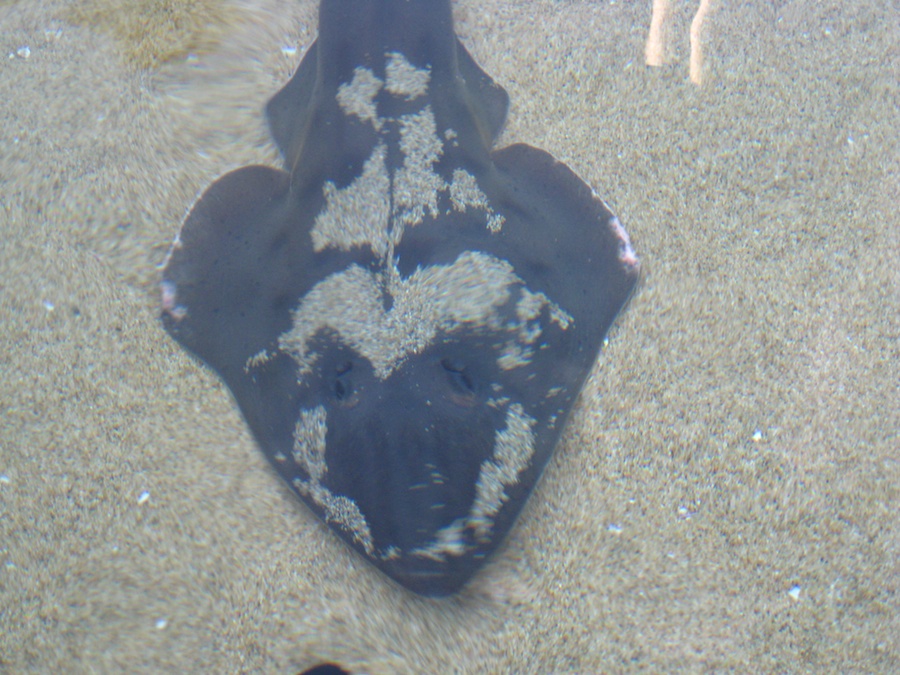
The narrow ray...

"Whatca looking at human???"
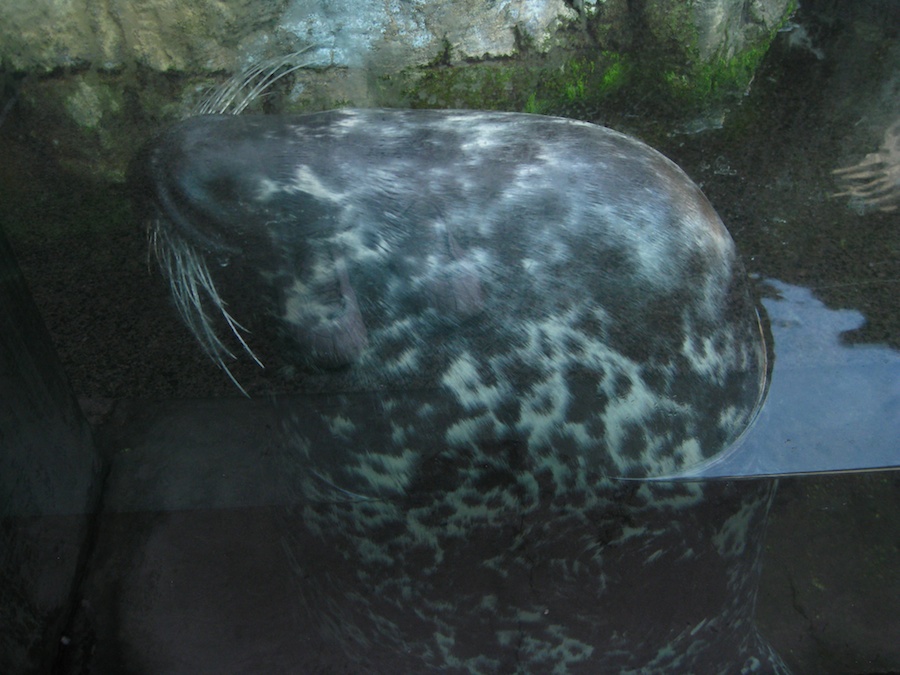
Just resting
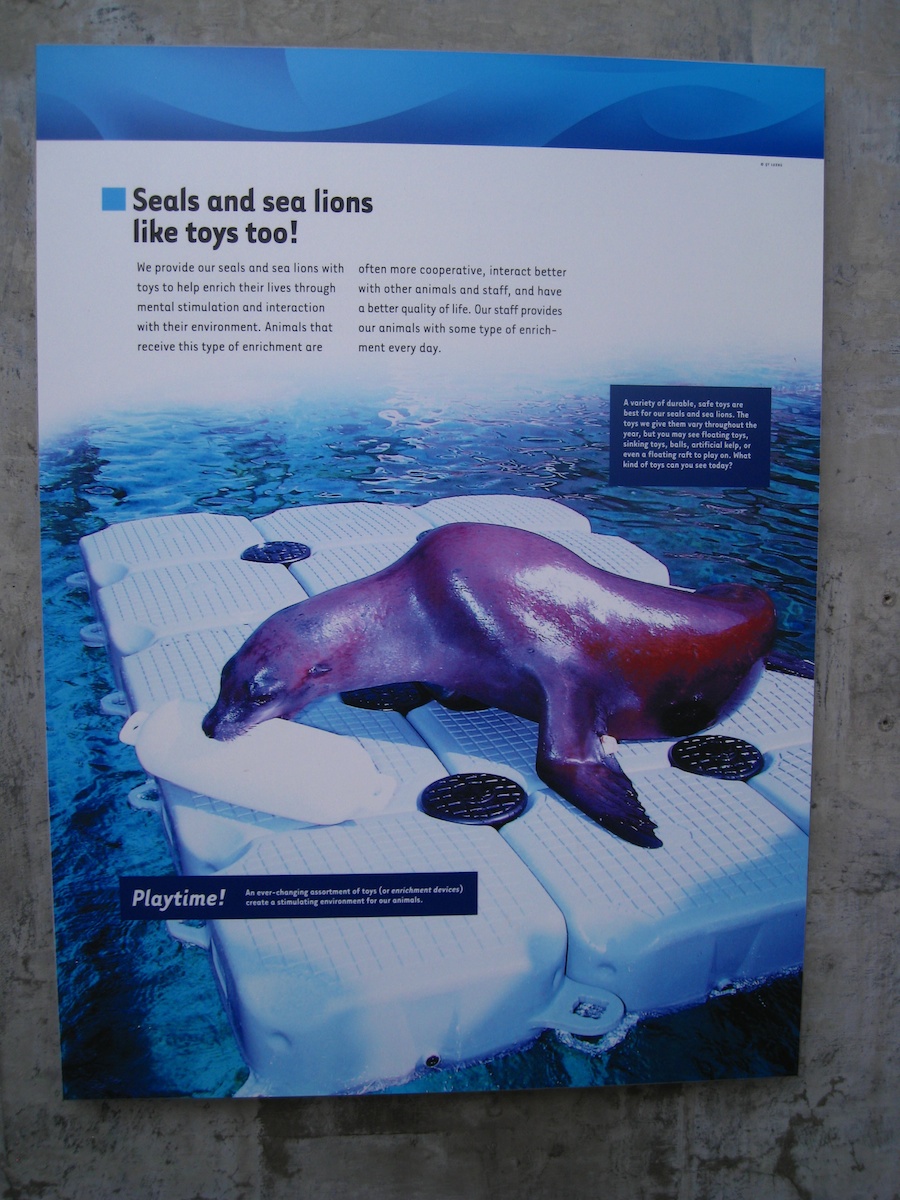

"Come here little guy! I am hungary!"


Here fishy fishy

Old guys....

In The Tank



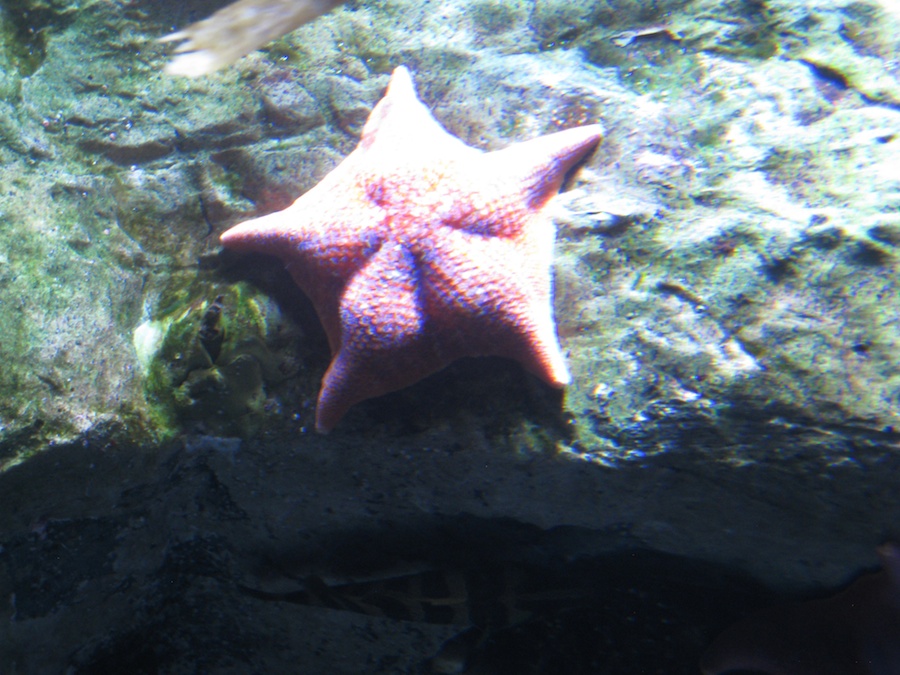

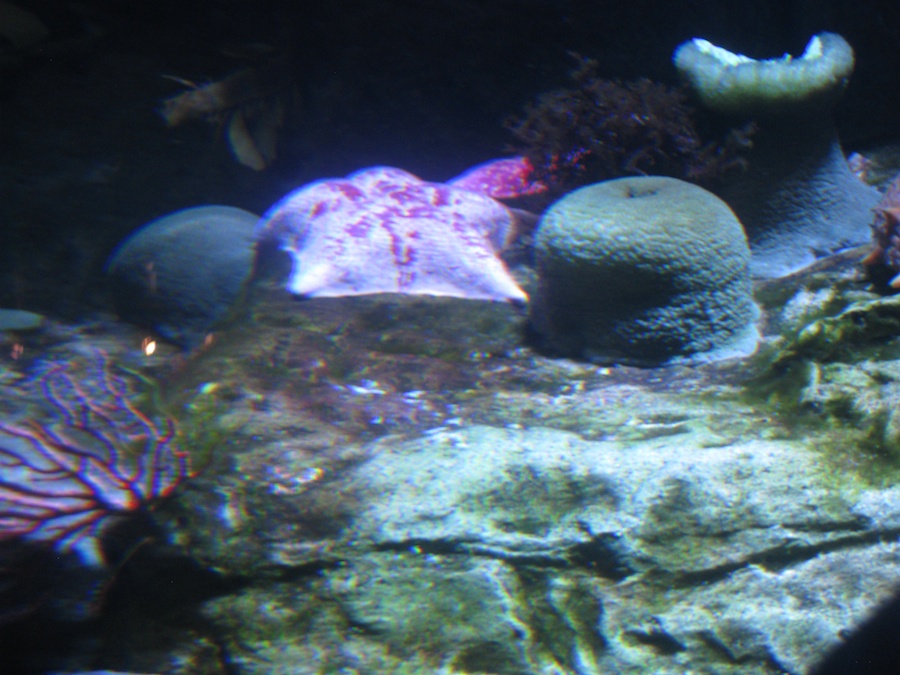
Sand Dollars
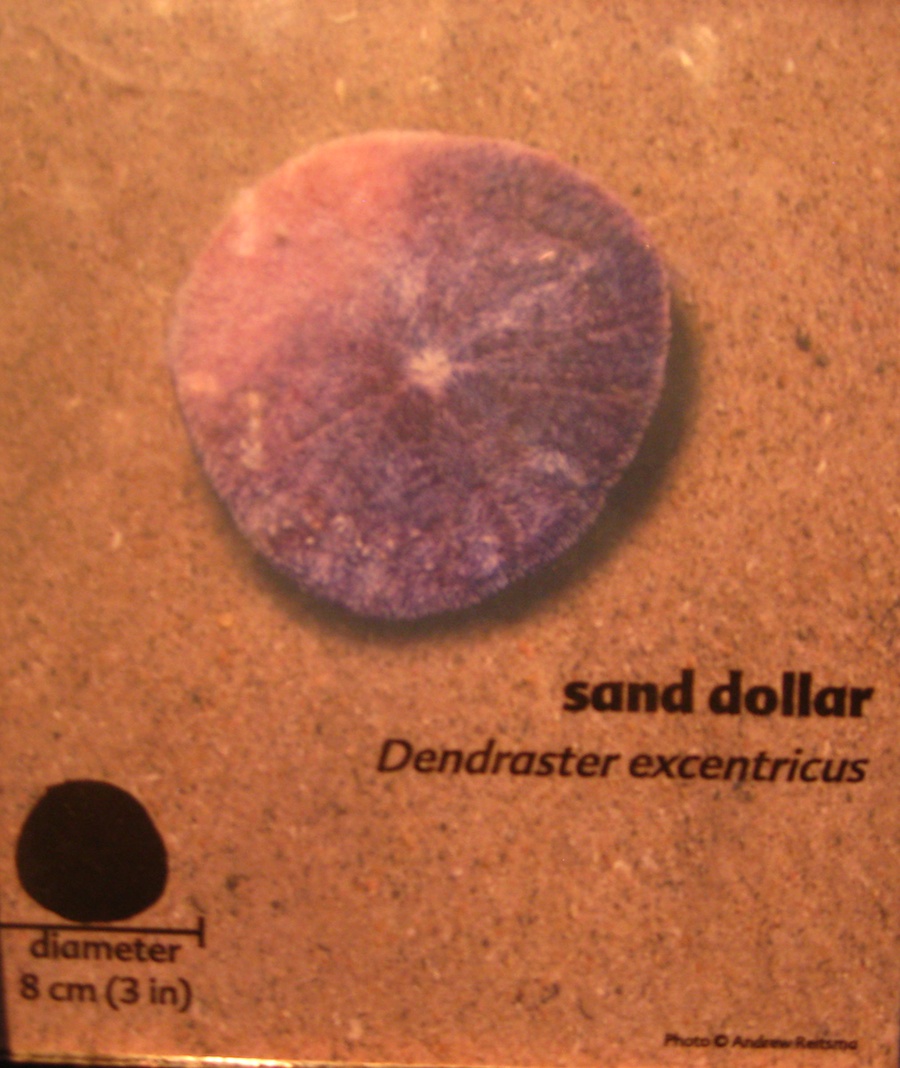
With inflation theu are $1.50!
Did You Know? - The term sand dollar (or sea cookie or snapper biscuit in New Zealand, or pansy shell in South Africa) refers to species of extremely flattened, burrowing echinoids belonging to the order Clypeasteroida. Some species within the order, not quite as flat, are known as sea biscuits. Related animals include the sea urchins, sea cucumbers and starfish.

Just sitting around
Did You Know? - The term "sand dollar" derives from the appearance of the tests (skeletons) of dead individuals after being washed ashore. The test lacks its velvet-like skin of spines and has often been bleached white by sunlight. To beachcombers of the past, this suggested a large, silver coin, such as the old Spanish or American dollar (diameter 38-40mm).


Shark Eggs

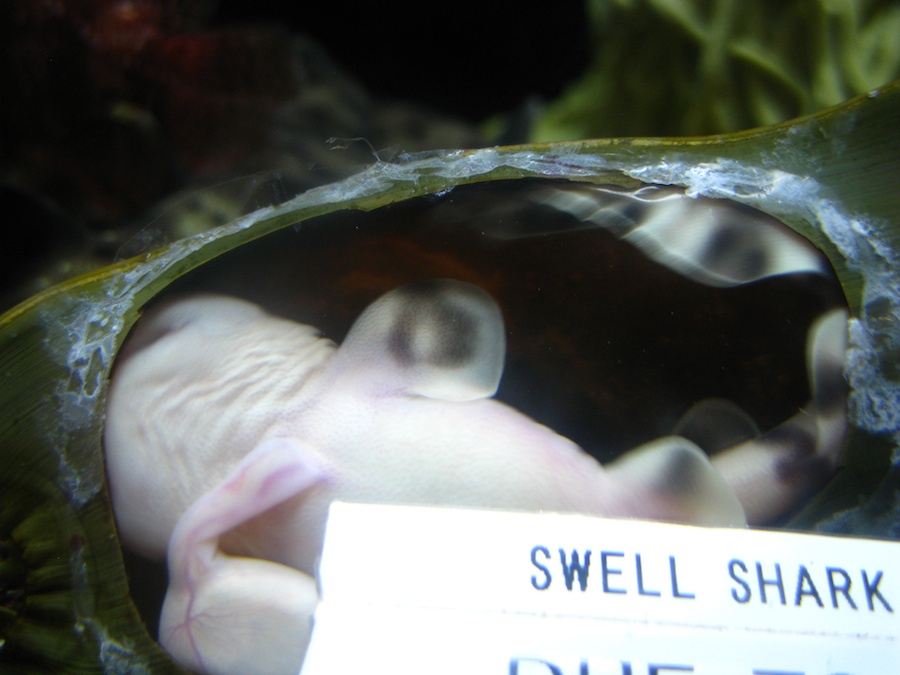


Hello Mr. Puffin

Jellyfish

Hello there...
Did You Know? - Aurelia aurita (also called the moon jelly, moon jellyfish, common jellyfish, or saucer jelly) is a widely studied species of the genus Aurelia. All species in the genus are closely related, and it is difficult to identify Aurelia medusae without genetic sampling; most of what follows applies equally to all species of the genus.
The medusa is translucent, usually about 25–40 cm in diameter, and can be recognized by its four horseshoe-shaped gonads, easily seen through the top of the bell. It feeds by collecting medusae, plankton and mollusks with its tentacles, and bringing them into its body for digestion. It is capable of only limited motion, and drifts with the current, even when swimming.

Comb Jellyfish


Umbrella Jellyfish



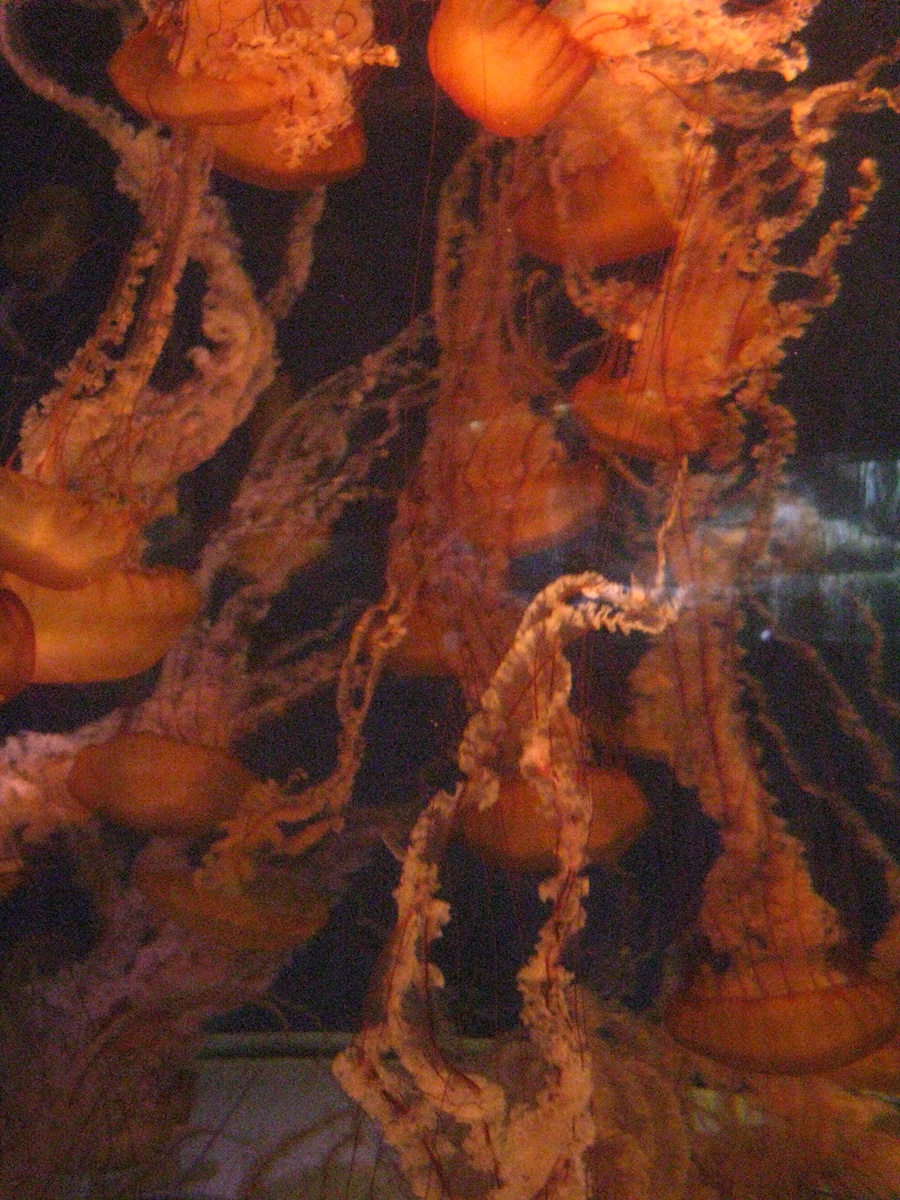

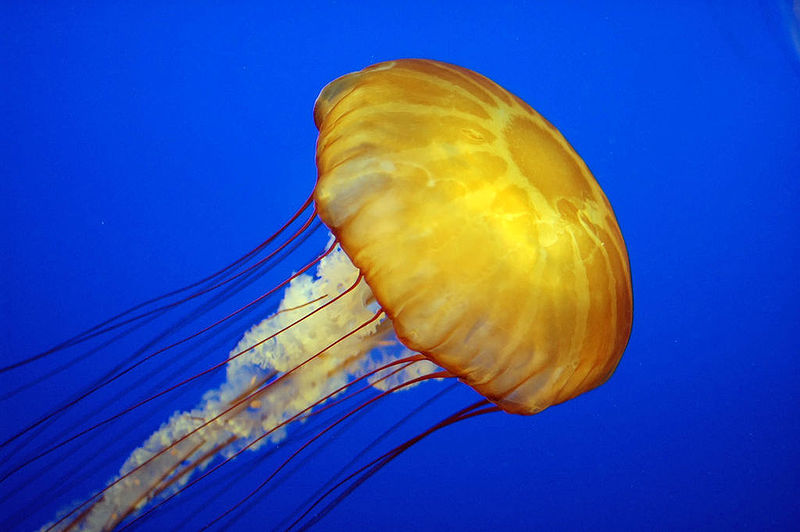


Sea Otters

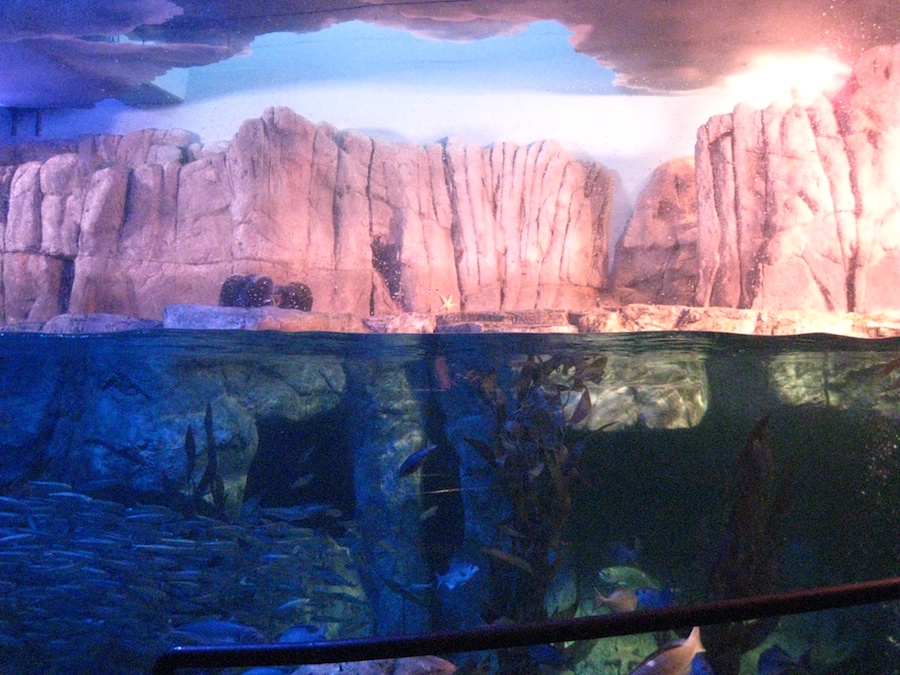

Stonefish???

Stay away!
Did You Know? - Synanceia is a genus of fish of the family Synanceiidae, the Stonefishes, whose members are venomous, dangerous, and even fatal to humans. It is one of the most venomous fishes in the world currently known. They are found in the coastal regions of Indo-Pacific oceans.
Synanceia are primarily marine, though some species are known to live in rivers. Its species have potent neurotoxins secreted from glands at the base of their needle-like dorsal fin spines which stick up when disturbed or threatened.
The vernacular name of the species, the stonefish, derives from the stonefish's ability to camouflage itself with a grey and mottled color similar to the color of a stone.
Swimmers may not notice them, and may inadvertently step on them, triggering a sting. When the stonefish is disturbed, it may inject an amount of venom proportional to the amount of pressure applied to it.


Don't Ask... They Change Their Sex

Sea Apple???
Did You Know? - Sea apple is a common name for the colorful and somewhat round sea cucumbers of the genera Paracucumaria and Pseudocolochirus, found primarily in Indo-Pacific waters. Sea apples are filter feeders with tentacles, ovate bodies, and tube-like feet. They can release their internal organs or a toxin into the water when stressed.


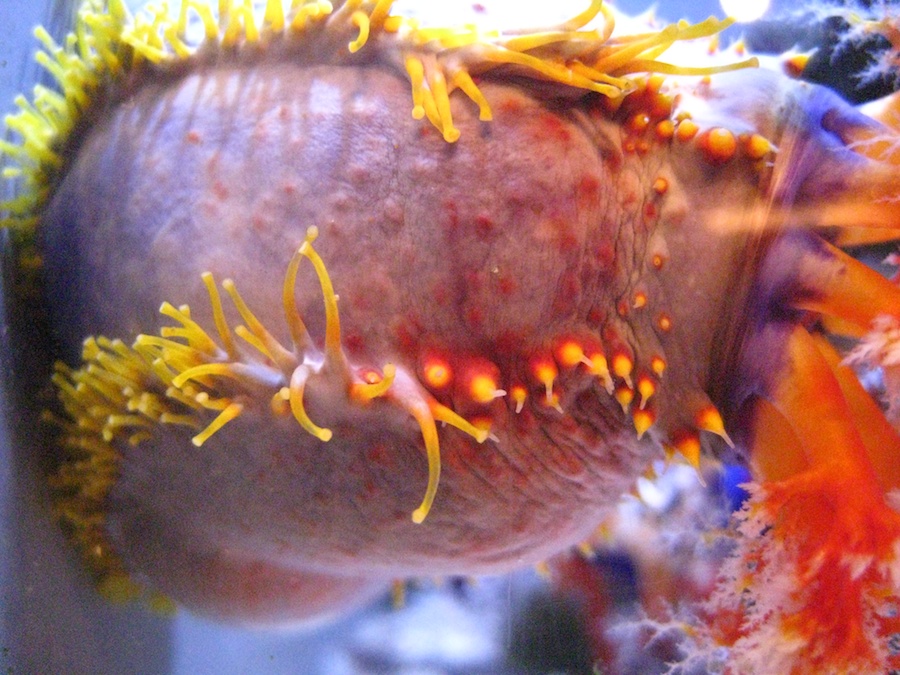
Wierd looking guys
Did You Know? - When disturbed, sea apples, like other holothuroids, can expel their internal organs to distract predators. In addition, sea apples can release a toxic saponin called holothurin into the water as a defense mechanism.
In addition, if threatened or in an unsuitable environment, sea apples can consume large amounts of surrounding seawater to swell to nearly double their original size, this allows them to be moved to a new area by water currents, and much more quickly than they could walk.


Eat!
Did You Know? - Sea apples often starve to death in display aquaria. Levels of plankton in aquaria are often lower than optimal, and sea apples are often seen attempting to feed not only at night, as in their natural habitat, but also in the daytime. With only low levels of food available, these sea apples often starve, becoming progressively smaller as this happens. To try and circumvent these problems, hobbyists attempt to give the sea apple specimens supplemental feedings of plankton and liquid food.
Roar! The Lion Fish

Amazing
Did You Know? - Pterois, commonly known as lionfish, is a genus of venomous marine fish found mostly in the Indo-Pacific. Pterois is characterized by red, white and black bands, showy pectoral fins and venomous spiky fin rays. Pterois are classified into nine different species, but Pterois radiata, Pterois volitans and Pterois miles are the most commonly studied. Pterois are popular aquarium fish and are readily utilized in the culinary world.

They have interesting habits
Did You Know? - According to a study that involved the dissection of over 1,400 lionfish stomachs from Bahamian to North Carolinian waters, Pterois prey mostly on small fish, invertebrates and mollusks in large amounts, with some specimens' stomachs containing up to six different species of prey.
The amount of prey in lionfish stomachs over the course of the day suggest that lionfish feed most actively from 7:00–11:00 am, with decreased feeding throughout the afternoon. Lionfish are skilled hunters, using specialized bilateral swim bladder muscles to provide exquisite control of location in the water column, allowing the fish to alter its center of gravity to better attack prey.
The lionfish then spreads its large pectoral fins and swallows its prey in a singe motion. Researchers have also noted that lionfish blow jets of water while approaching prey, apparently in order to disorient them.
Giddy Up Horsey!
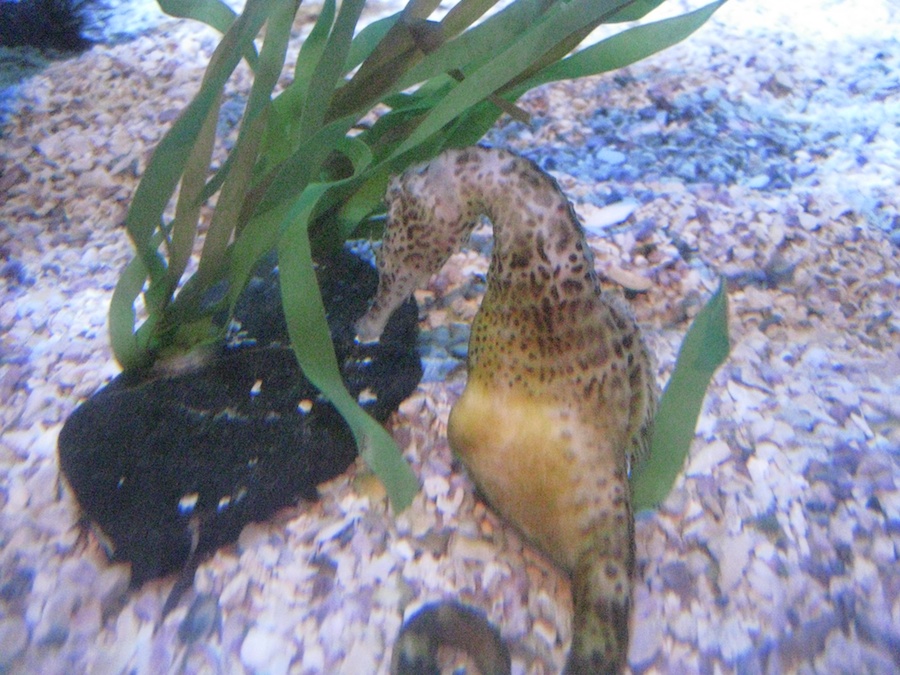
Sea Dragons
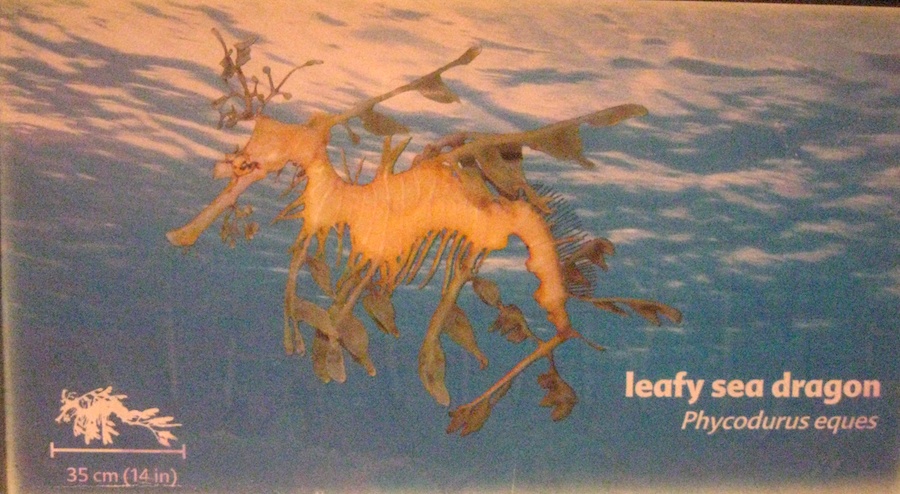



Floating around the sea weed
Did You Know? - The leafy seadragon or Glauert's seadragon, Phycodurus eques, is a marine fish in the family Syngnathidae, which also includes the seahorses. It is the only member of the genus Phycodurus. It is found along the southern and western coasts of Australia.
The name is derived from the appearance, with long leaf-like protrusions coming from all over the body. These protrusions are not used for propulsion; they serve only as camouflage.
The leafy seadragon propels itself by means of a pectoral fin on the ridge of its neck and a dorsal fin on its back closer to the tail end. These small fins are almost completely transparent and difficult to see as they undulate minutely to move the creature sedately through the water, completing the illusion of floating seaweed.



Amazing creatures